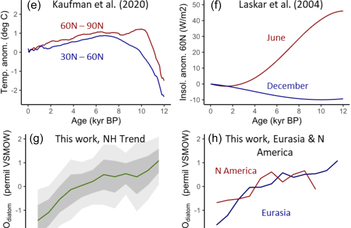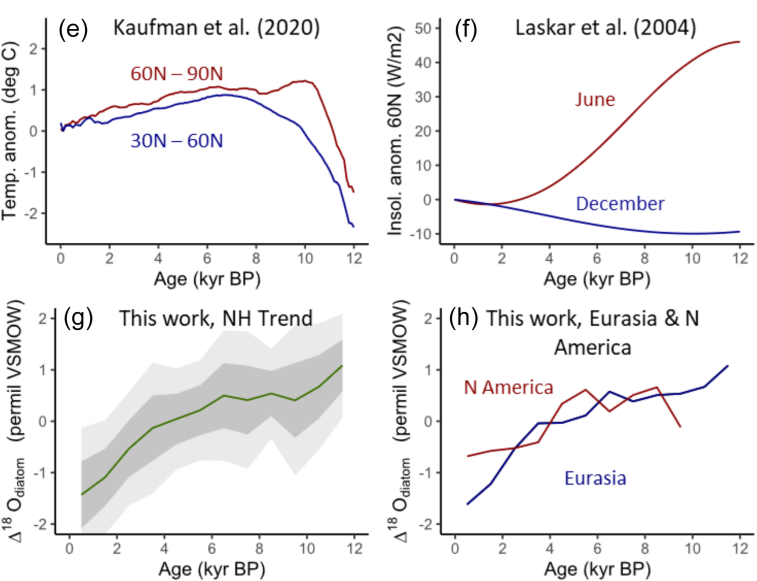The diatom shells capture climate change!

When students or families hike among the mountain lakes of the Carpathians and pick up a handful of "mud" from the lakeshore, they are actually holding millions of diatom shells in their hands, which are made of quartz. The extraction of diatom shells from "mud" turns them into a powdery white substance, and through the stable isotopes of oxygen (δ18OBSi) preserved in these shells, it becomes possible to reconstruct past climates. In a recent comprehensive study, which includes the results of high-altitude research conducted at the Department of Environmental and Landscape Geography and co-authored by Enikő Magyari, a researcher at our department, 71 Holocene oxygen isotope datasets covering the last 11,700 years are globally summarized. The research finds that in cases where the residence time of water in the lakes is less than 100 years and the lakes are located north of 45° N latitude, the oxygen isotope signal preserved in the diatom shells precisely records the most significant Holocene climate changes: the Holocene Thermal Maximum, the period when the continent experienced its warmest annual average temperatures, approximately 5 to 8 thousand years ago, the Neoglacial cooling from 4 thousand years ago, and numerous smaller climate fluctuations. It's a sad fact that climate skeptics use Neoglacial cooling to portray current global warming as a favorable change! Although the functioning and transformation of the Earth's climate system are extremely complex, it is important to understand its fundamentals in order to form a realistic perspective on the future of our planet. We do this, for example, with geography students here at ELTE as part of the Climate Change and Carbon Cycle course!
The study can be downloaded from here: https://doi.org/10.5194/cp-20-363-2024


